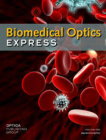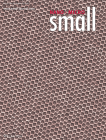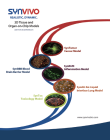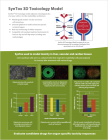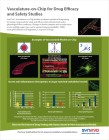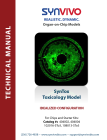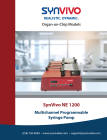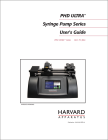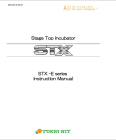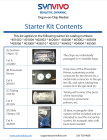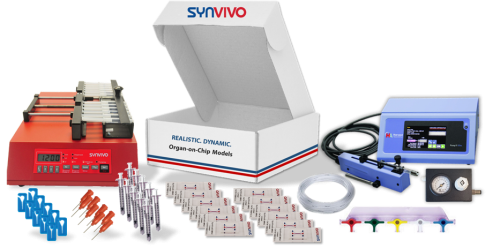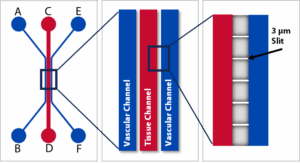
SynTox Idealized Linear Chip
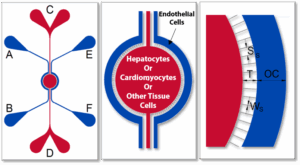
SynTox Idealized Radial Chip
SynTox™ toxicology-on-chip platform is designed for multi-cellular, multi-architecture applications (e.g. lung, liver, cardiac). This system closely mimics native tissue environments under dynamic flow conditions offering human-relevant assessments of drug-induced toxicity. With low reagent requirements and integrated real-time optical monitoring SynTox enhances throughput and cost-efficiency while delivering high-content data for early safety screening, disease modeling, and mechanistic toxicology studies.
Vascular Model
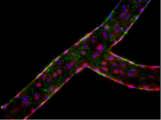
Assess drug induced vascular injury.
Cardiac Model

Drug toxicity on cardiac cells. Left panel indicates viable cells while right panel indicates mixture of live and dead cells following drug treatment.
Lung Model
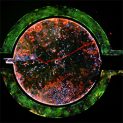
Lung epithelial oxidative stress can be visualized using SynALI.
Liver Model
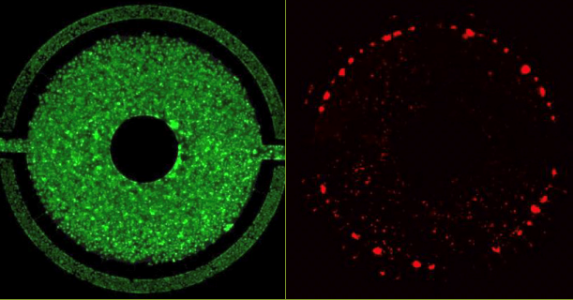
Acetaminophen toxicity on hepatocytes following bolus injection. Peripheral hepatocytes show severe toxicity.
Applications and Assays
Drug-induced Vascular Leakage
Vascular Inflammation
Biomarker Analysis
Efficacy and Toxicity Screening
Dose-Dependent Toxicity
Cell Viability
Mechanism of Action Studies
Publications Using SynTox Models
Contract Research Services using SynTox models
Drug safety testing in lung, liver, heart and vasculature
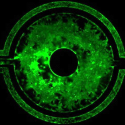
Models Available
Human Lung-on-Chip
- Lung microvascular endothelial cells, bronchial epithelial cells
- Lung microvascular endothelial cells, alveolar epithelial cells and stroma
Human Liver-on-Chip
Primary hepatocyes (or HepG2) with liver endothelial cells
Human Heart-on-Chip
Co-Culture with Primary aortic endothelial cells, cardiac smooth muscle cells
Human Vasculature-on-Chip
Primary endothelial cells (or HUVECs) in microvascular network or idealized chips
Assays Available
Drug-induced vascular leakage- Test with permeability or TEER
Antibody Drug Conjugate (ADC) screening
Vascular inflammation
Biomarker analysis
Dose-response
Cell viability
Mechanism of action studies
Endpoints
- Permeability
- TEER
- Immune cells adhesion and migration
- Cell proliferation and viability assays
- ROS
- Apoptosis
- Biomarker analysis on chip or from effluents collected
- Omic analysis from cells extracted from chip
- RNAseq, QPCR or WES analysis
Brochures and Technical Manuals
Videos
Purchase SynTox Products and Instruments
Purchase starter kits, sets of chips, cells/cell lines, instrumentation and training workshops
SynTox Starter Kit: Select this for your first-time purchase. All the basic components required to run SynTox assays can be purchased in a kit format. The SynTox starter kit includes 12 chips, tubing, clamps, needles, syringes, pneumatic priming device (required for seeding cells) and the cell impedance analyzer (TEER configuration only).
Cells/Cell Lines: SynVivo offers human and animal cells and cell lines that have been tested and validated in the Toxicity model.
SynTox Chip Options: Depending on your specific research applications you can select from Linear or Radial
Instrumentation: Syringe Pumps for cell seeding and maintaining flow based assays, stagetop Incubator and inverted microscope for real time visualization and quantitation of your toxicity assays
Training Workshops: SynVivo offers 2 and 4 day scientist-led training sessions. Gain hands-on experience with our organ-on-a-chip technology.
Starter Kits - Select your chip model
Important Note: Starter kit does not include required consumables such as cells, media, and matrix. Other required equipment not included is syringe pumps, cell seeding pumps, incubators, and microscopes.
Chip Model | CAT# | Product Name | Price | Qty | |
|---|---|---|---|---|---|
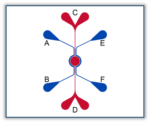 | 404002 | $2,100 | Max: Min: 1 Step: 1 | ||
 | 404004 | $2,100 | Max: Min: 1 Step: 1 |
SynTox Model Chips
Chip Model | CAT# | Product Name | Price | Qty | |
|---|---|---|---|---|---|
 | 102016-STo3 | $375 | Max: Min: 1 Step: 1 | ||
 | 108013-STo3 | $375 | Max: Min: 1 Step: 1 |
Human and Animal Cells/Cell Lines
CAT # | Product Name | Price | Qty | |
|---|---|---|---|---|
Syn-10HU-210 | $1,235 | Max: Min: 1 Step: 1 | ||
Syn-10HU-233 | $933 | Max: Min: 1 Step: 1 | ||
Syn-10HU-210N | $1,312 | Max: Min: 1 Step: 1 | ||
Syn-10RA-017 | $609 | Max: Min: 1 Step: 1 |
Training Workshops
CAT# | Product Name | Price | Qty | |
|---|---|---|---|---|
SYN48 | SynVivo On-Site Training Workshop – 2 days | $2,750 | Max: Min: 1 Step: 1 | |
SYN96 | SynVivo On-Site Training Workshop – 4 days | $4,500 | Max: Min: 1 Step: 1 |
Syringe Pumps - Instrumentation for Seeding Cells and Maintaining Flow Based Assays
Image | CAT# | Product Name | Price | Qty | |
|---|---|---|---|---|---|
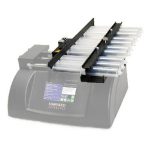 | 301004 | PHD Ultra 6/10 Multi Syringe Rack | $920 | Max: Min: 1 Step: 1 | |
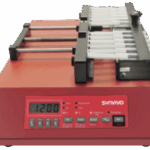 | 301020 | Multichannel Programmable Syringe Pump – SynVivo NE 1200 | $2,100 | Max: Min: 1 Step: 1 | |
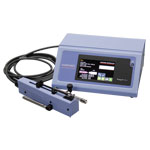 | 301002 | Pump 11 Elite Nanomite Infusion/Withdrawal Programmable Single Syringe | $3,790 | Max: Min: 1 Step: 1 | |
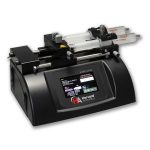 | 301003 | PHD Ultra Syringe Pump Programmable 2-Syringe Rack Standard Pressure | $5,651 | Max: Min: 1 Step: 1 |
Tokai Hit Stage Top Incubators
Image | CAT# | Product Name | Contact Us |
|---|---|---|---|
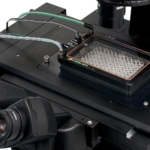 | 303015 | ||
 | 303016 | ||
 | 303017 |
